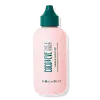What's inside
What's inside
 Key Ingredients
Key Ingredients

 Benefits
Benefits

 Concerns
Concerns

 Ingredients Side-by-side
Ingredients Side-by-side

Cyclopentasiloxane
EmollientDimethiconol
EmollientCaprylyl Methicone
Skin ConditioningPhenyl Trimethicone
Skin ConditioningArgania Spinosa Kernel Oil
EmollientOryza Sativa Bran Oil
EmollientBambusa Vulgaris Extract
Skin ConditioningHydrolyzed Soy Protein
HumectantMoringa Oleifera Seed Oil
EmollientGlyceryl Linoleate
EmollientTocopherol
AntioxidantWater
Skin ConditioningGlycerin
HumectantParfum
MaskingPolysilicone-15
UV FilterGlyceryl Linolenate
EmollientPotassium Sorbate
PreservativeDimethicone Crosspolymer
Emulsion StabilisingPhenoxyethanol
PreservativeBenzyl Salicylate
PerfumingCitronellol
PerfumingGeraniol
PerfumingHydroxycitronellal
PerfumingButylphenyl Methylpropional
PerfumingLimonene
PerfumingLinalool
PerfumingHydroxyisohexyl 3-Cyclohexene Carboxaldehyde
MaskingAlpha-Isomethyl Ionone
PerfumingCyclopentasiloxane, Dimethiconol, Caprylyl Methicone, Phenyl Trimethicone, Argania Spinosa Kernel Oil, Oryza Sativa Bran Oil, Bambusa Vulgaris Extract, Hydrolyzed Soy Protein, Moringa Oleifera Seed Oil, Glyceryl Linoleate, Tocopherol, Water, Glycerin, Parfum, Polysilicone-15, Glyceryl Linolenate, Potassium Sorbate, Dimethicone Crosspolymer, Phenoxyethanol, Benzyl Salicylate, Citronellol, Geraniol, Hydroxycitronellal, Butylphenyl Methylpropional, Limonene, Linalool, Hydroxyisohexyl 3-Cyclohexene Carboxaldehyde, Alpha-Isomethyl Ionone
Cyclopentasiloxane
EmollientDimethiconol
EmollientC15-19 Alkane
SolventCocos Nucifera Oil
MaskingParfum
MaskingOpuntia Ficus-Indica Extract
Skin ConditioningCarica Papaya Seed Oil
HumectantFicus Carica Fruit Extract
HumectantCarthamus Tinctorius Seed Oil
MaskingCitrus Medica Limonum Peel Extract
EmollientGarcinia Mangostana Fruit Extract
Skin ConditioningC10-18 Triglycerides
EmollientSodium Hyaluronate
HumectantTriolein
Skin ConditioningTocopheryl Acetate
AntioxidantGlyceryl Dioleate
EmollientBenzyl Salicylate
PerfumingLinalool
PerfumingCoumarin
PerfumingLimonene
PerfumingHexyl Cinnamal
PerfumingCyclopentasiloxane, Dimethiconol, C15-19 Alkane, Cocos Nucifera Oil, Parfum, Opuntia Ficus-Indica Extract, Carica Papaya Seed Oil, Ficus Carica Fruit Extract, Carthamus Tinctorius Seed Oil, Citrus Medica Limonum Peel Extract, Garcinia Mangostana Fruit Extract, C10-18 Triglycerides, Sodium Hyaluronate, Triolein, Tocopheryl Acetate, Glyceryl Dioleate, Benzyl Salicylate, Linalool, Coumarin, Limonene, Hexyl Cinnamal
 Reviews
Reviews

Alternatives
Ingredients Explained
These ingredients are found in both products.
Ingredients higher up in an ingredient list are typically present in a larger amount.
Benzyl Salicylate is a solvent and fragrance additive. It is an ester of benzyl alcohol and salicylic acid. This ingredient can be naturally found in some plants and plant extracts.
In fragrances, Benzyl Salicylate may be a solvent or a fragrance component. In synthetic musk scents, it is used as a solvent. For floral fragrances such as lilac and jasmine, it is used as a fragrance component. The natural scent of Benzyl Salicylate is described as "lightly-sweet, slightly balsamic".
While Benzyl Salicylate has been associated with contact dermatitis and allergies, emerging studies show it may not be caused by this ingredient alone.
However, this ingredient is often used with fragrances and other components that may cause allergies. It is still listed as a known allergen in the EU. We recommend speaking with a professional if you have concerns.
Another study from 2021 shows Benzyl Salicylate may have anti-inflammatory properties.
Learn more about Benzyl SalicylateCyclopentasiloxane, or D5, is a silicone used to improve texture of products and trap moisture.
D5 is considered lightweight and volatile. Volatile means it evaporates quickly after application. Once evaporated, D5 leaves a thin barrier that helps keep skin hydrated.
It is also an emollient. Emollients help soften the skin and prevent water loss. Silicones create a silky texture in products. D5 helps other ingredients become more spreadable.
Studies show D5 is safe to use in skincare products. We recommend speaking with a skincare professional if you have concerns.
Learn more about CyclopentasiloxaneDimethiconol is a silicone that resembles the popular dimethicone. Like other silicones, it is an emollient. Emollients create a thin film on skin to prevent moisture from escaping.
This ingredient helps to create a silky texture and improve spreadability. Due to its high molecular weight and thickness, it is often combined with cyclopentasiloxane.
Limonene is a fragrance that adds scent and taste to a formulation.
It's found in the peel oil of citrus fruits and other plants such as lavender and eucalyptus. The scent of limonene is generally described as "sweet citrus".
Limonene acts as an antioxidant, meaning it helps neutralize free radicals.
When exposed to air, oxidized limonene may sensitize the skin. Because of this, limonene is often avoided by people with sensitive skin.
The term 'fragrance' is not regulated in many countries. In many cases, it is up to the brand to define this term. For instance, many brands choose to label themselves as "fragrance-free" because they are not using synthetic fragrances. However, their products may still contain ingredients such as essential oils that are considered a fragrance.
Learn more about LimoneneLinalool is a fragrance and helps add scent to products. It's derived from common plants such as cinnamon, mint, citrus, and lavender.
Like Limonene, this ingredient oxidizes when exposed to air. Oxidized linalool can cause allergies and skin sensitivity.
This ingredient has a scent that is floral, spicy tropical, and citrus-like.
Learn more about LinaloolParfum is a catch-all term for an ingredient or more that is used to give a scent to products.
Also called "fragrance", this ingredient can be a blend of hundreds of chemicals or plant oils. This means every product with "fragrance" or "parfum" in the ingredients list is a different mixture.
For instance, Habanolide is a proprietary trade name for a specific aroma chemical. When used as a fragrance ingredient in cosmetics, most aroma chemicals fall under the broad labeling category of “FRAGRANCE” or “PARFUM” according to EU and US regulations.
The term 'parfum' or 'fragrance' is not regulated in many countries. In many cases, it is up to the brand to define this term.
For instance, many brands choose to label themselves as "fragrance-free" because they are not using synthetic fragrances. However, their products may still contain ingredients such as essential oils that are considered a fragrance by INCI standards.
One example is Calendula flower extract. Calendula is an essential oil that still imparts a scent or 'fragrance'.
Depending on the blend, the ingredients in the mixture can cause allergies and sensitivities on the skin. Some ingredients that are known EU allergens include linalool and citronellol.
Parfum can also be used to mask or cover an unpleasant scent.
The bottom line is: not all fragrances/parfum/ingredients are created equally. If you are worried about fragrances, we recommend taking a closer look at an ingredient. And of course, we always recommend speaking with a professional.
Learn more about Parfum